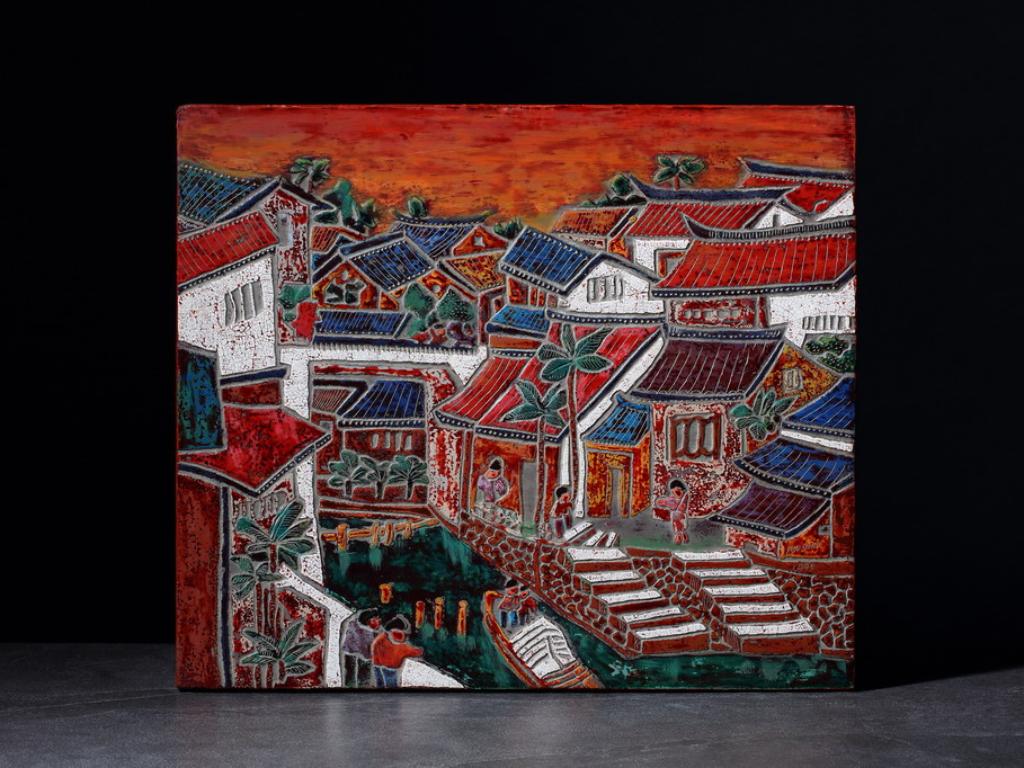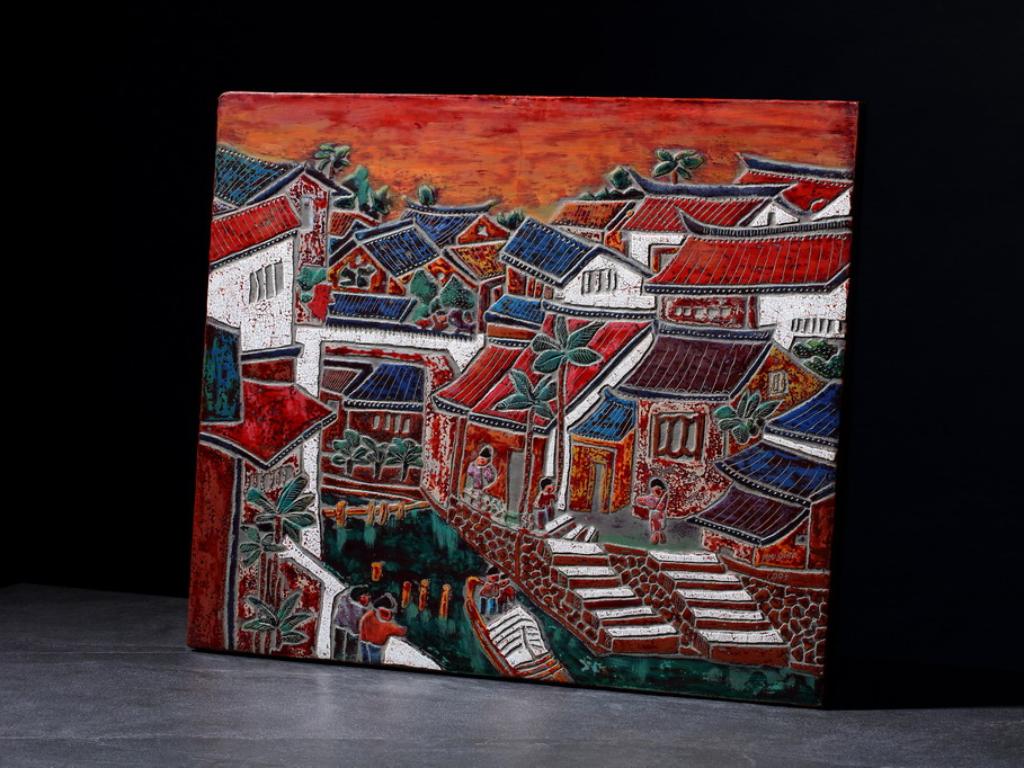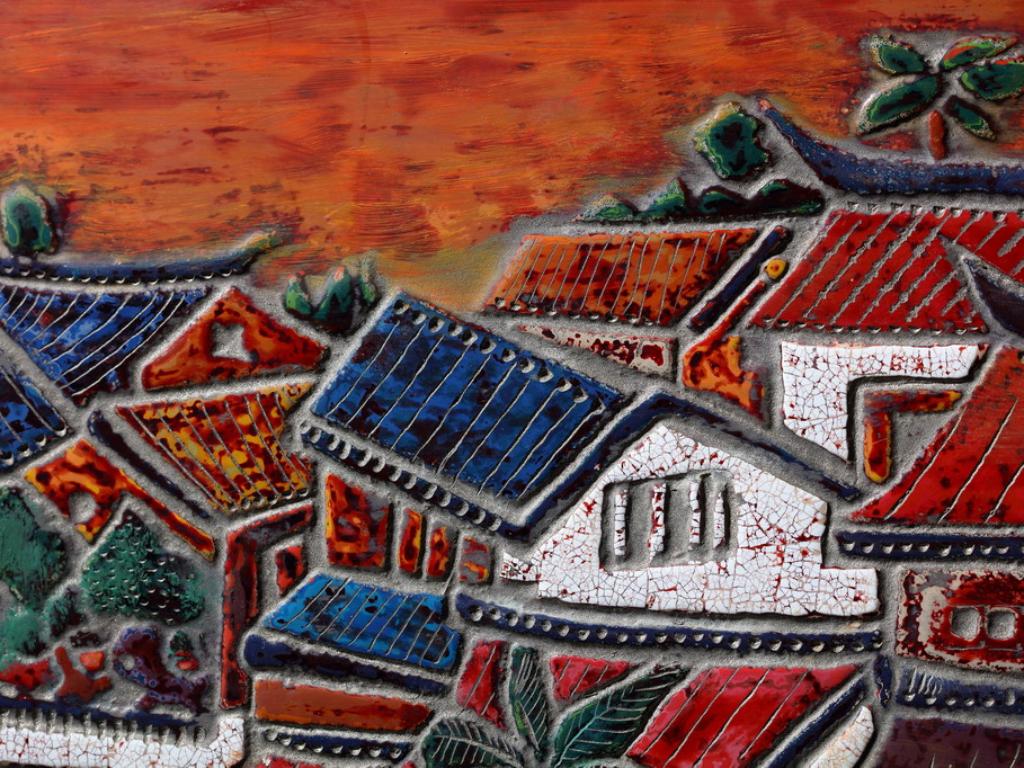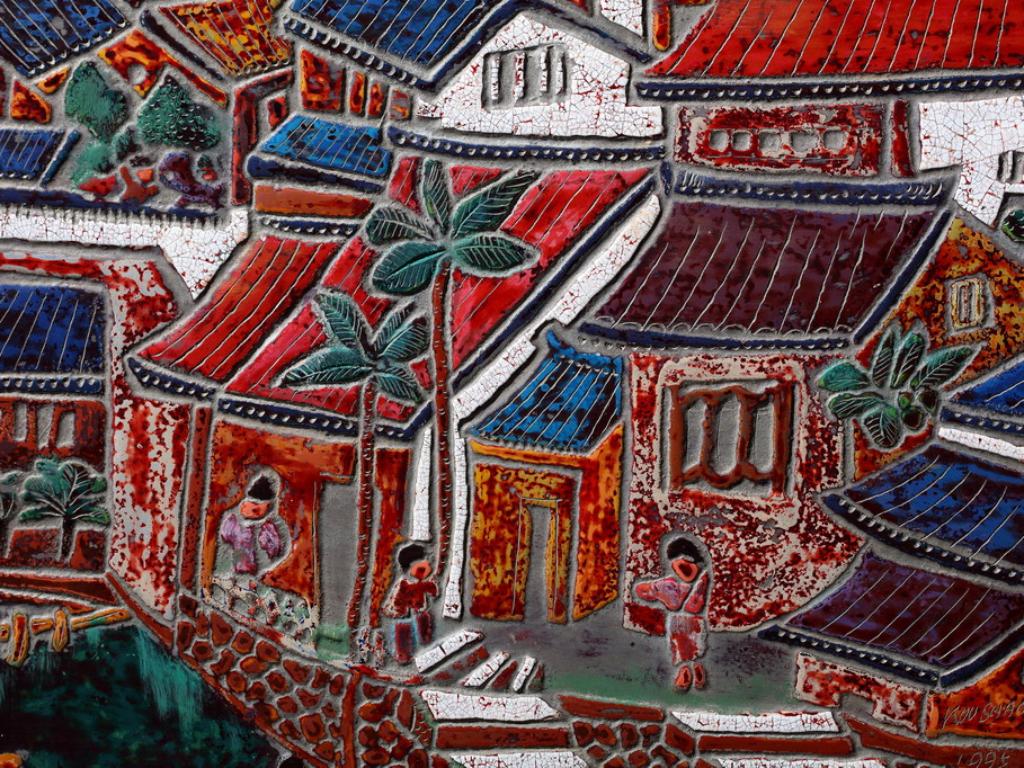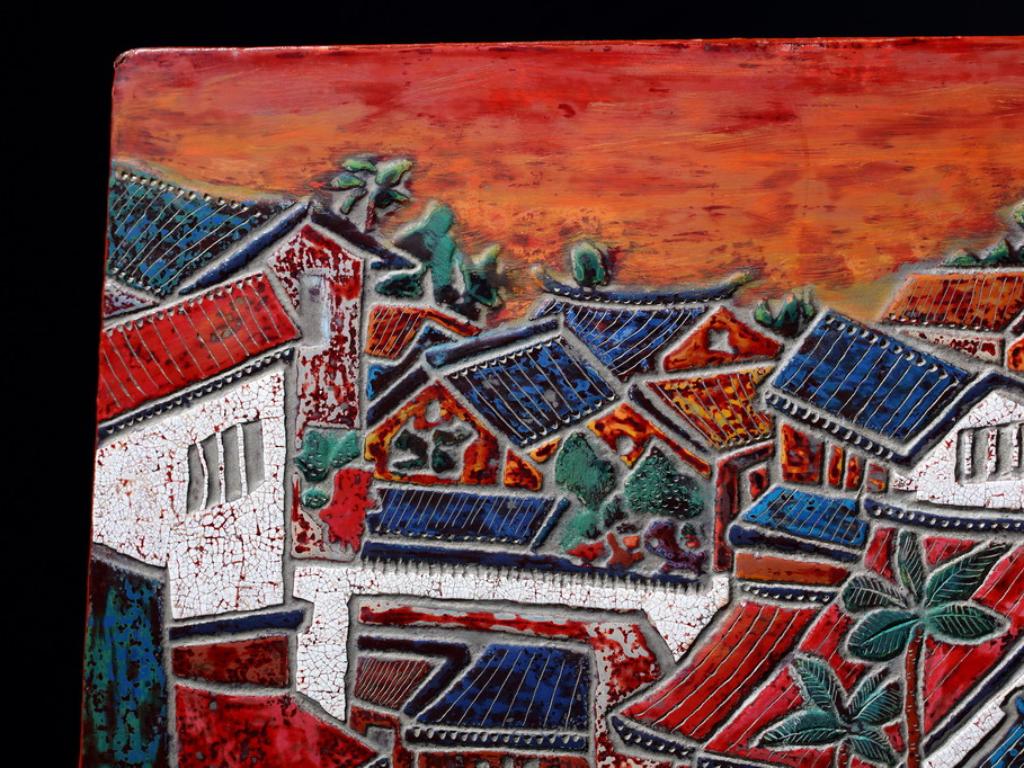
Collection
By the Canal
In the early days, the wares needed in daily life or used for customs in the folk were mostly produced in Fujian and Guangdong, China. Only until Japanese occupation period, Japanese started to import lacquer trees from Vietnam and widely planted them for lacquer materials. In addition, they also established school to cultivate talents for the production of lacquer ware and it started the establishment of lacquer art with Taiwanese brands. “Penglai lacquer” which was very popular in Japanese occupation period was the lacquer art truly with Taiwanese characteristics. Other than being used for wares with practical function, “Penglai lacquer” also developed products that were only for appreciation, such as wall mount decoration. Traditional lacquer painting was a part of lacquer ware while modern lacquer paining is purely fine arts. Its materials and techniques were extended and developed from traditional lacquer ware, but its style and creation concept were the implant of western painting. The beauty of the art was presented in a classical, implicit and far-reaching approach. Liao Kao-Shan was the first person who was specialized in lacquer painting.
Lai Kao-Shan's “Canal” is his typical masterpiece. The topic is the settlement landscape of Fujian-style architecture by the side of Malacca Canal in Malaysia. It combines many skills of lacquer art together; for example, after carving images on the wood, firm the ware with raw lacquer, paint the red lacquer, fill up with colored lacquer, and then paste on shell sand and egg shell to present the sense of imaginative beauty. It integrates traditional skills and modern aesthetics and fully demonstrates the personal features of the craftsman's.
